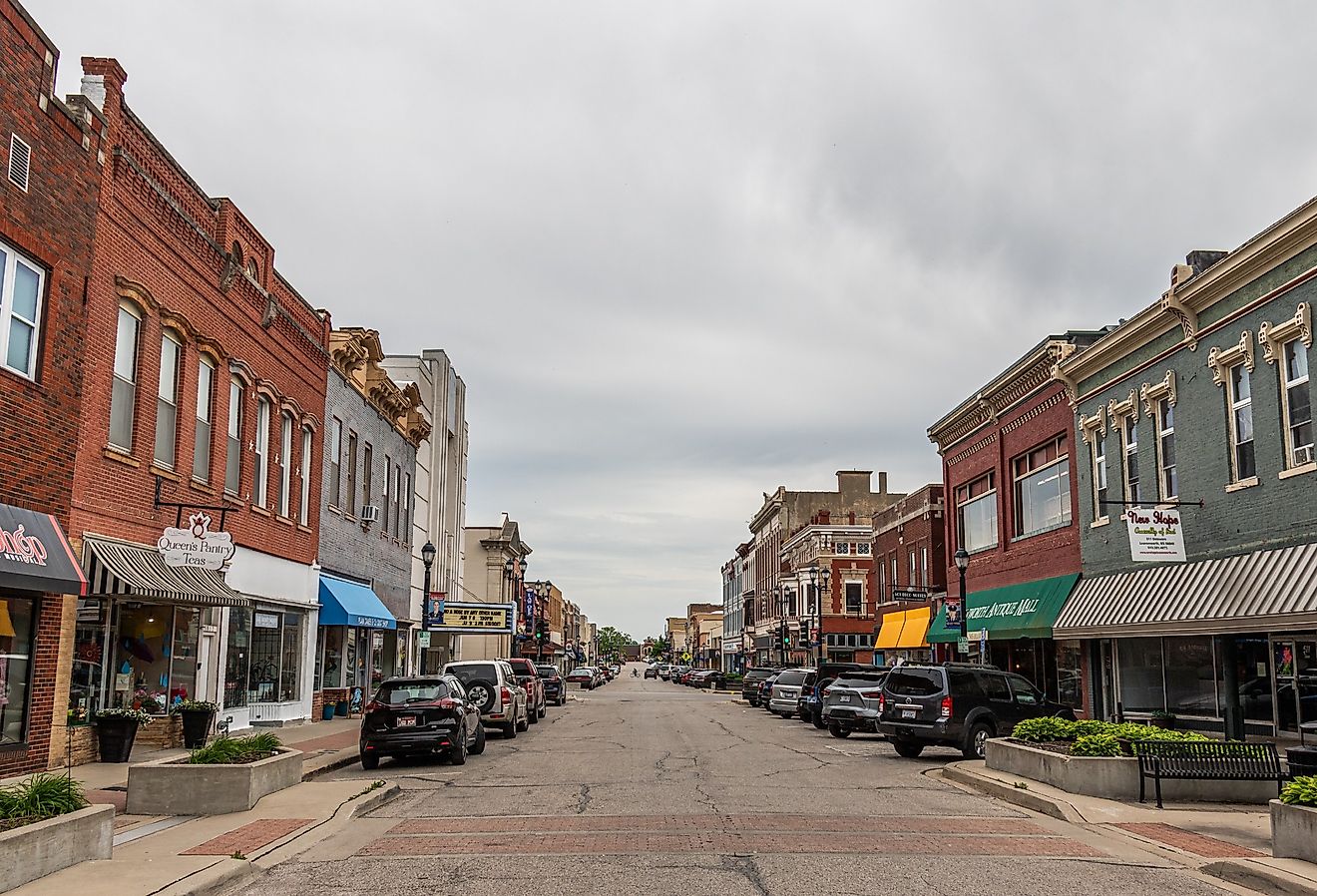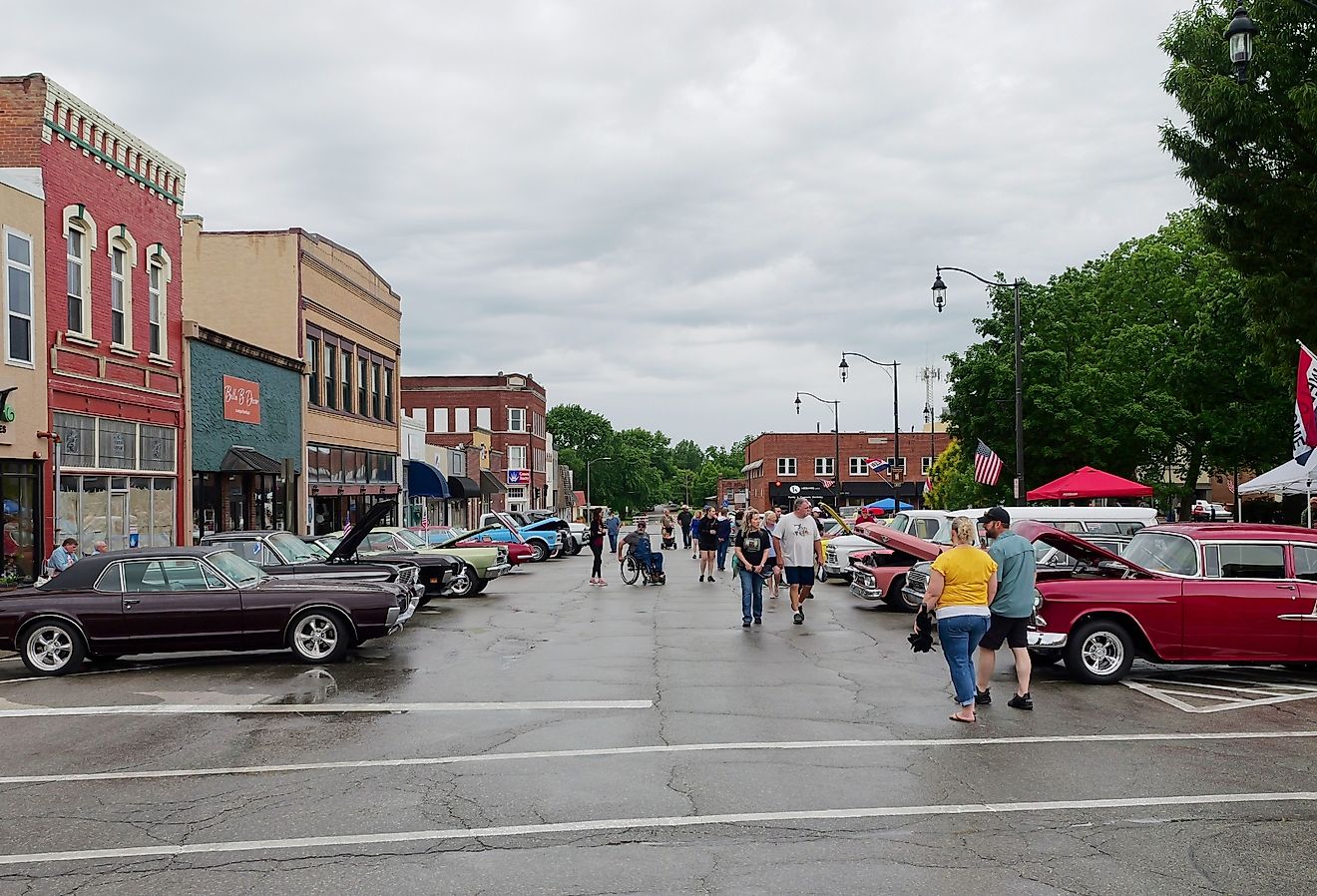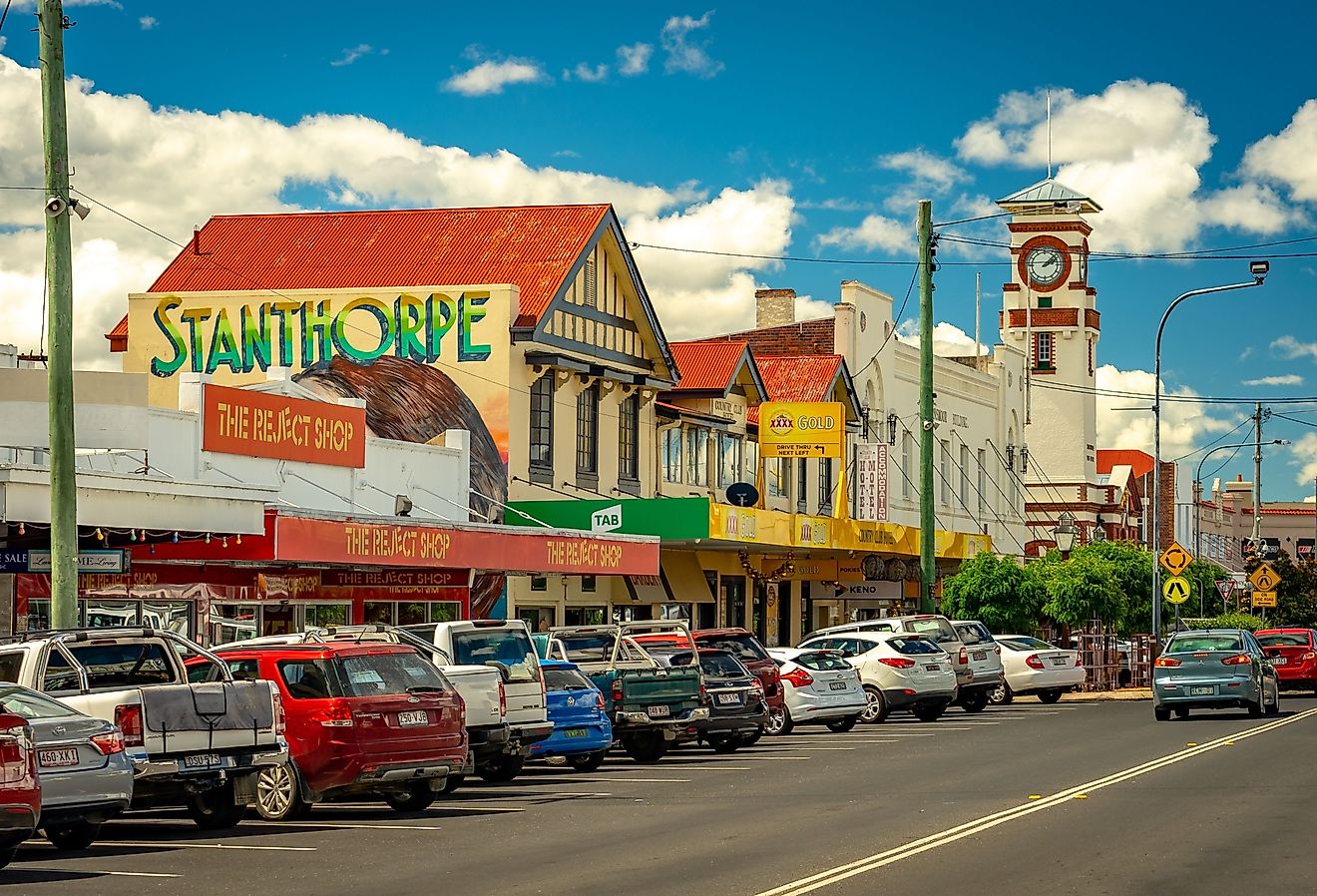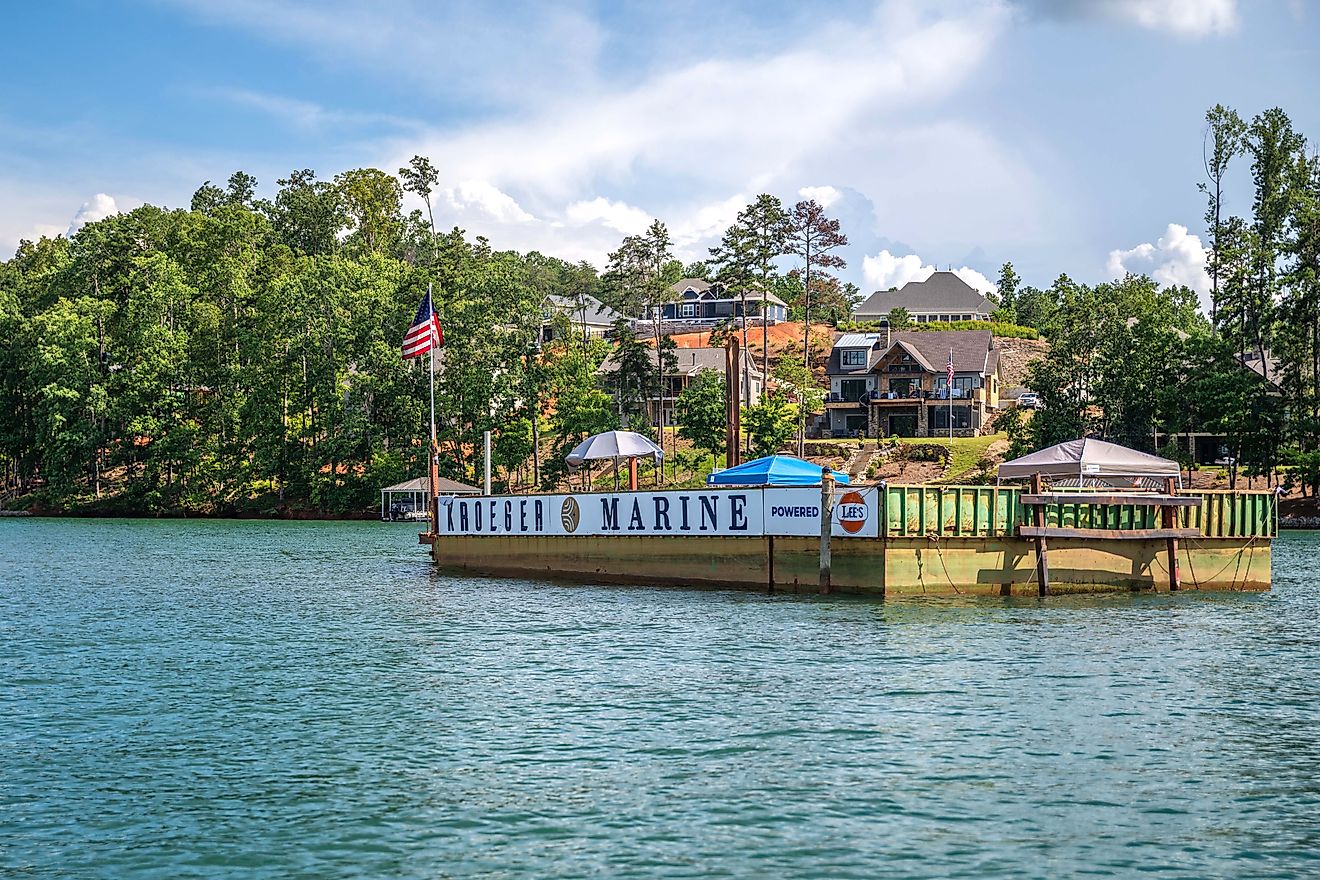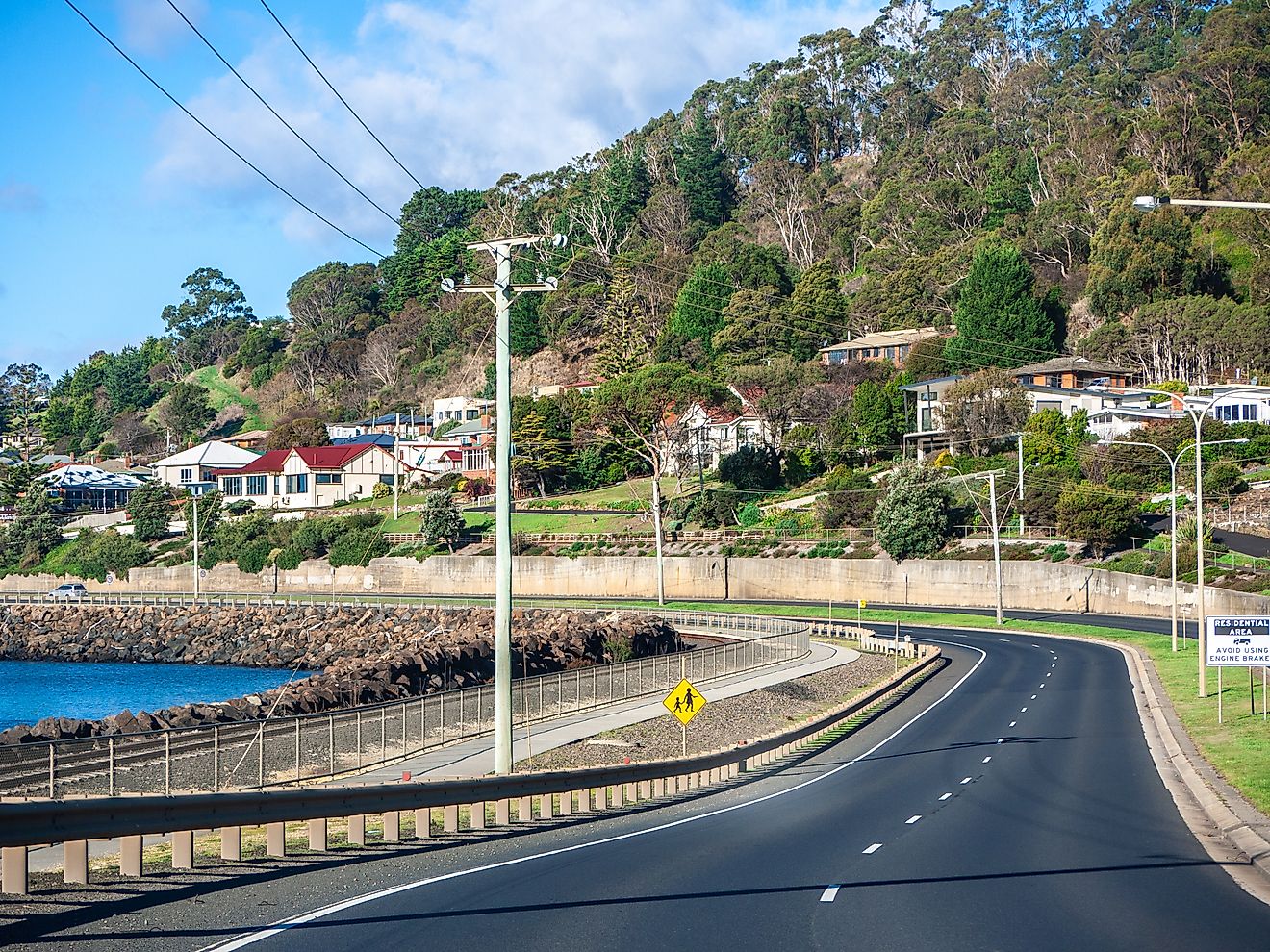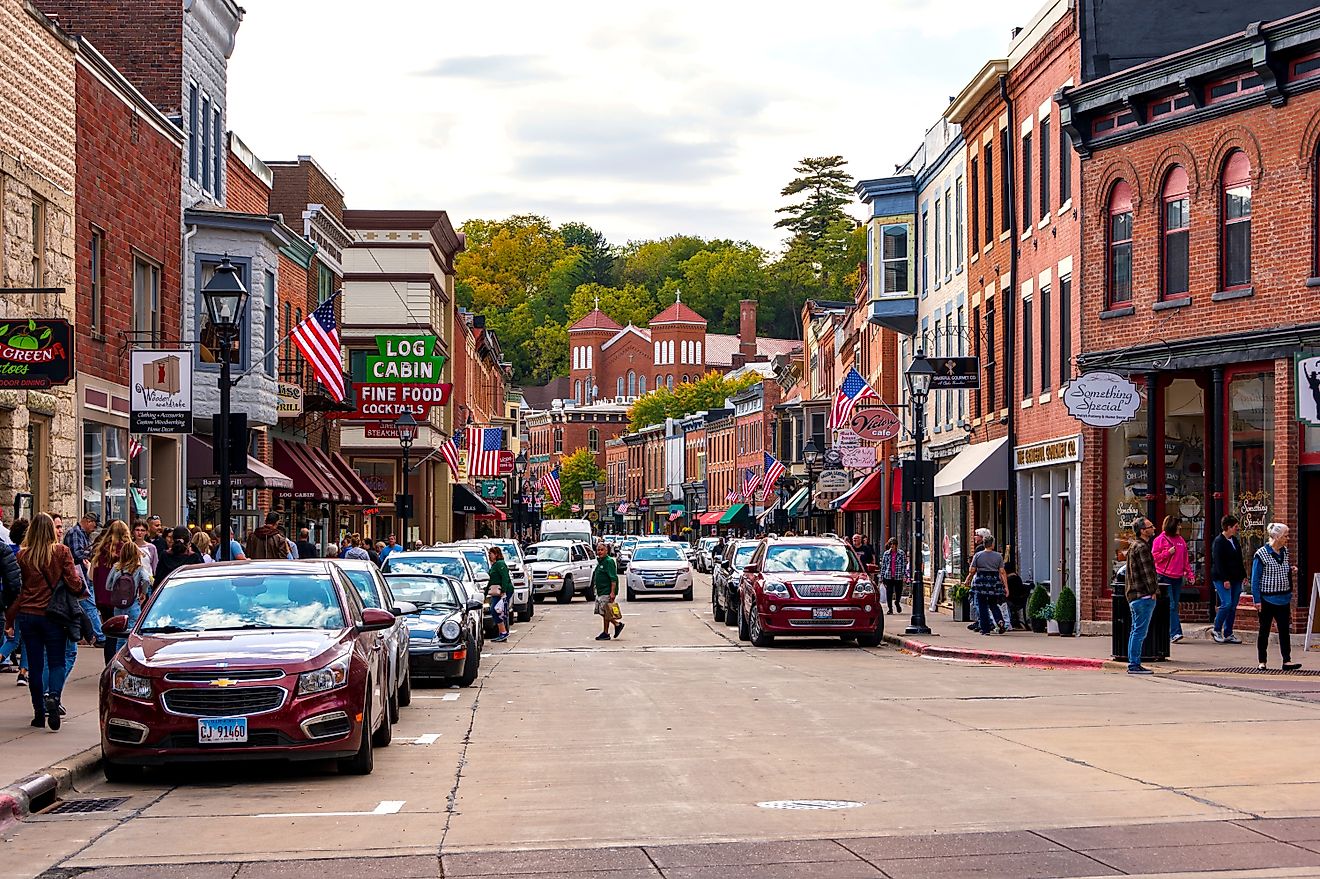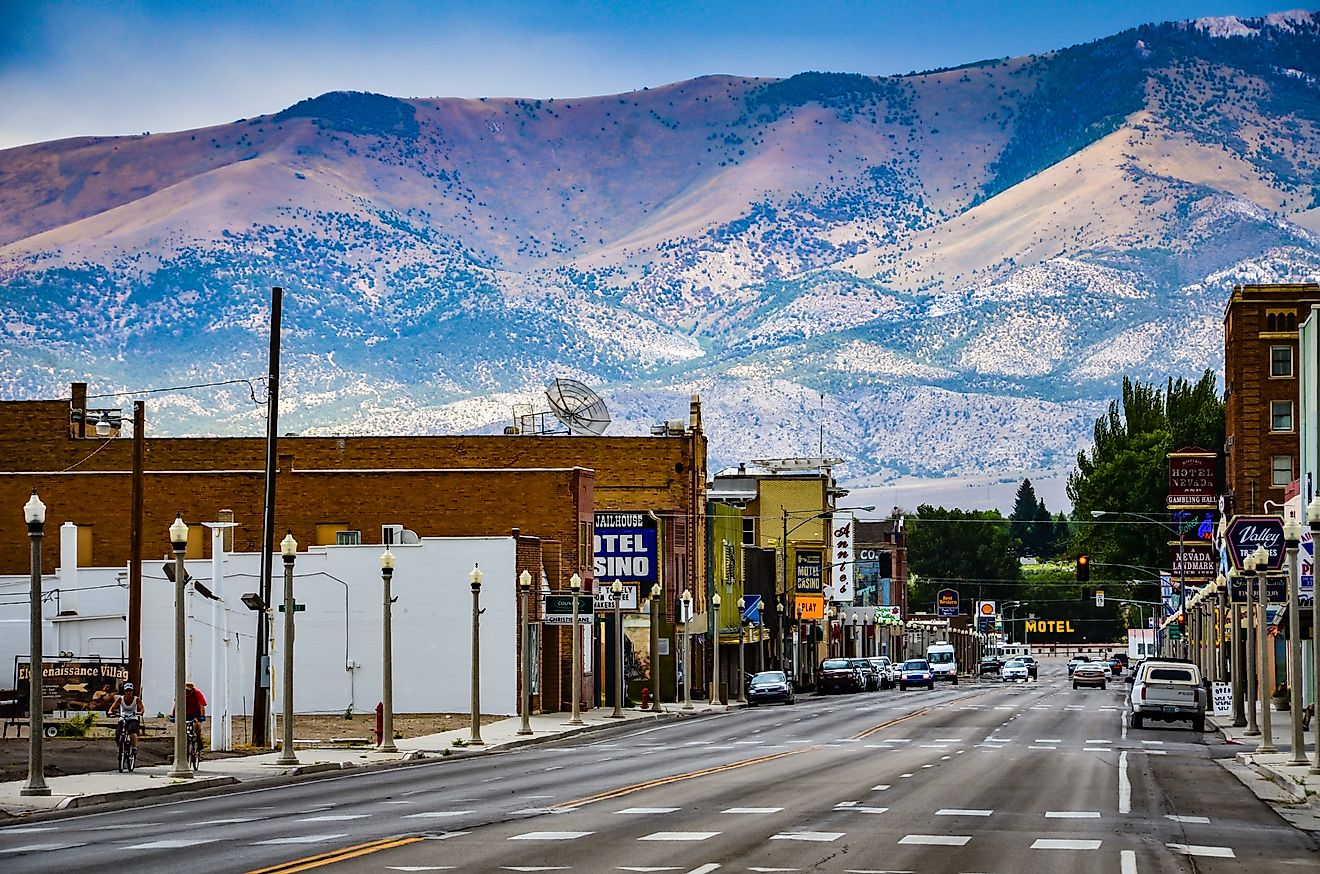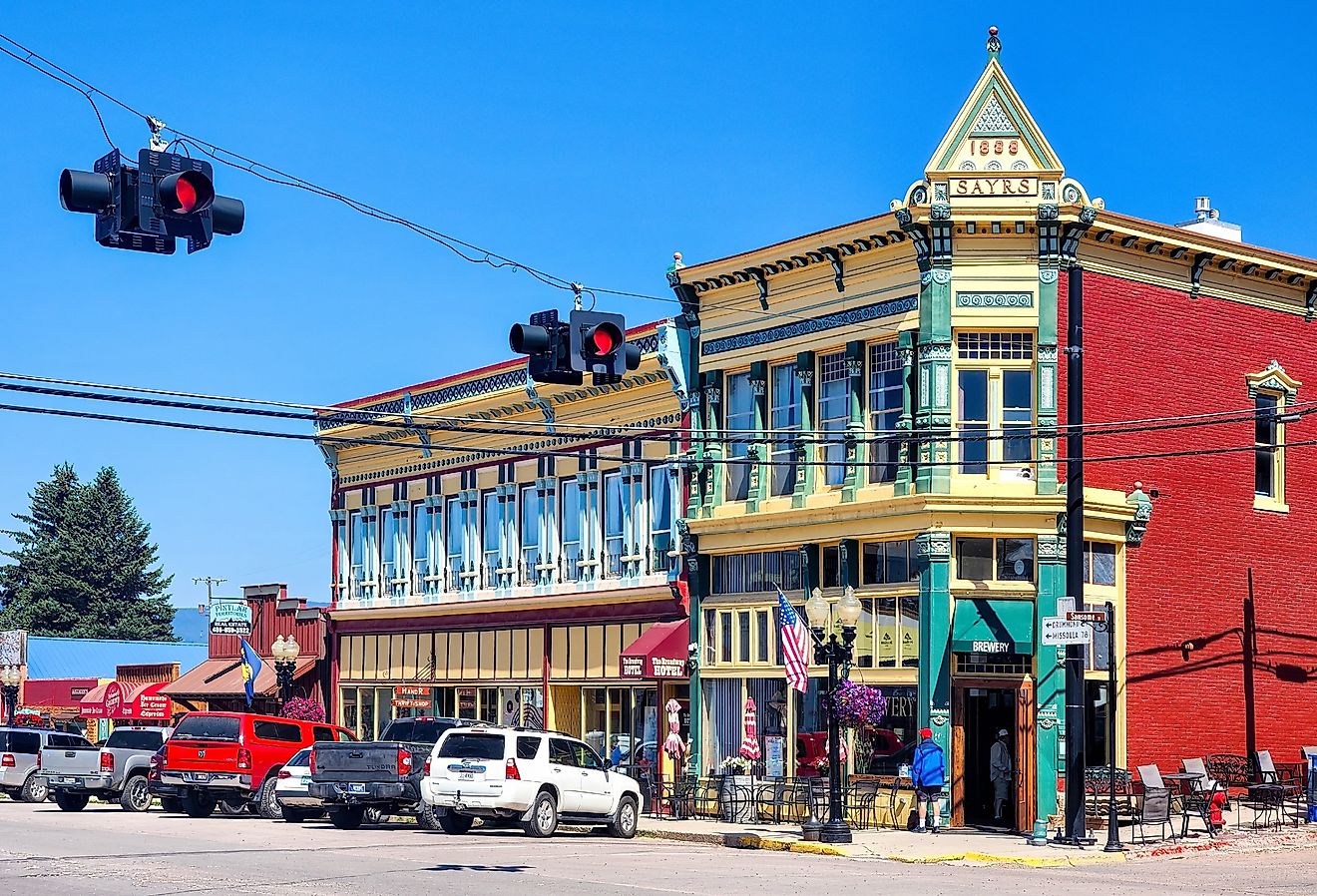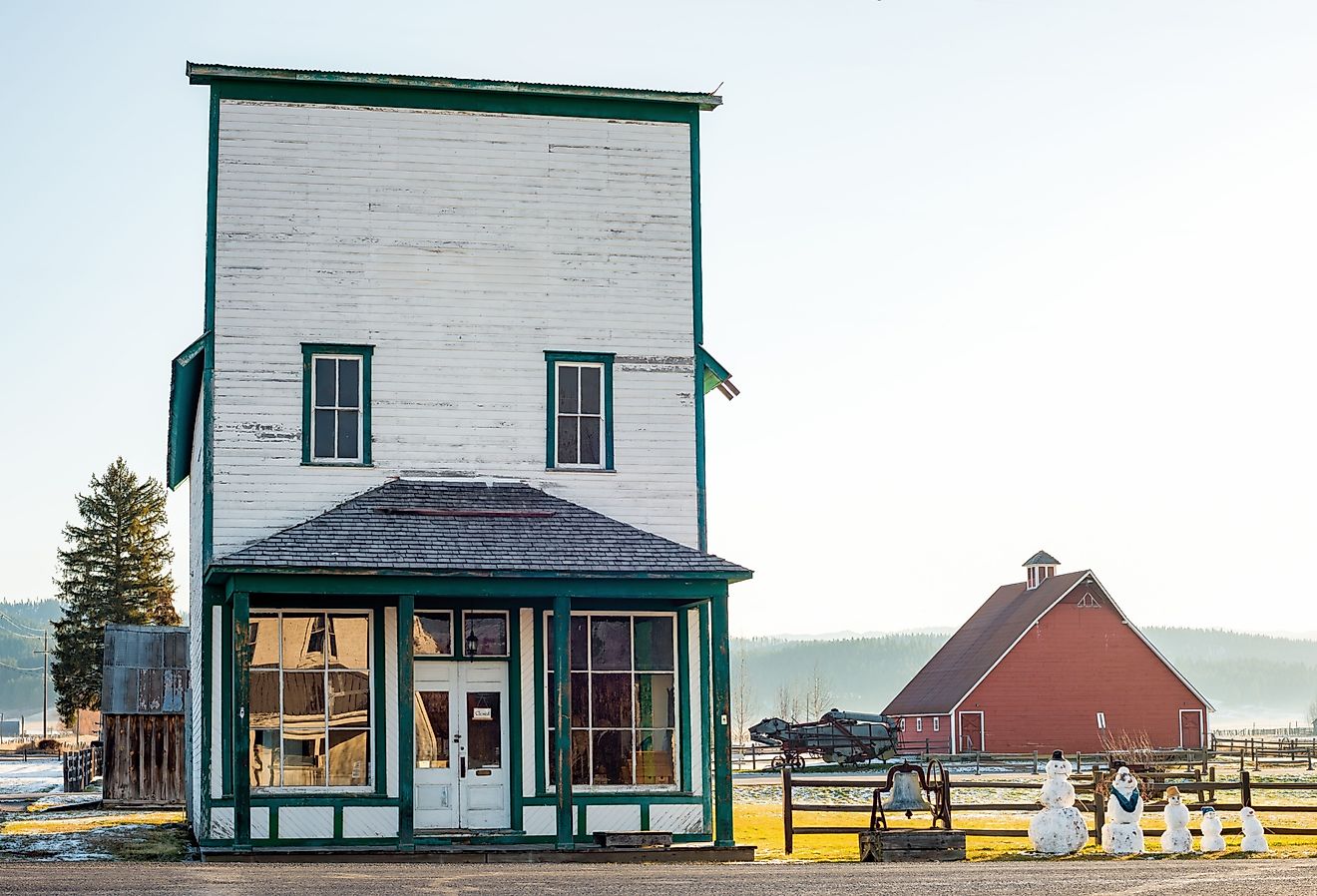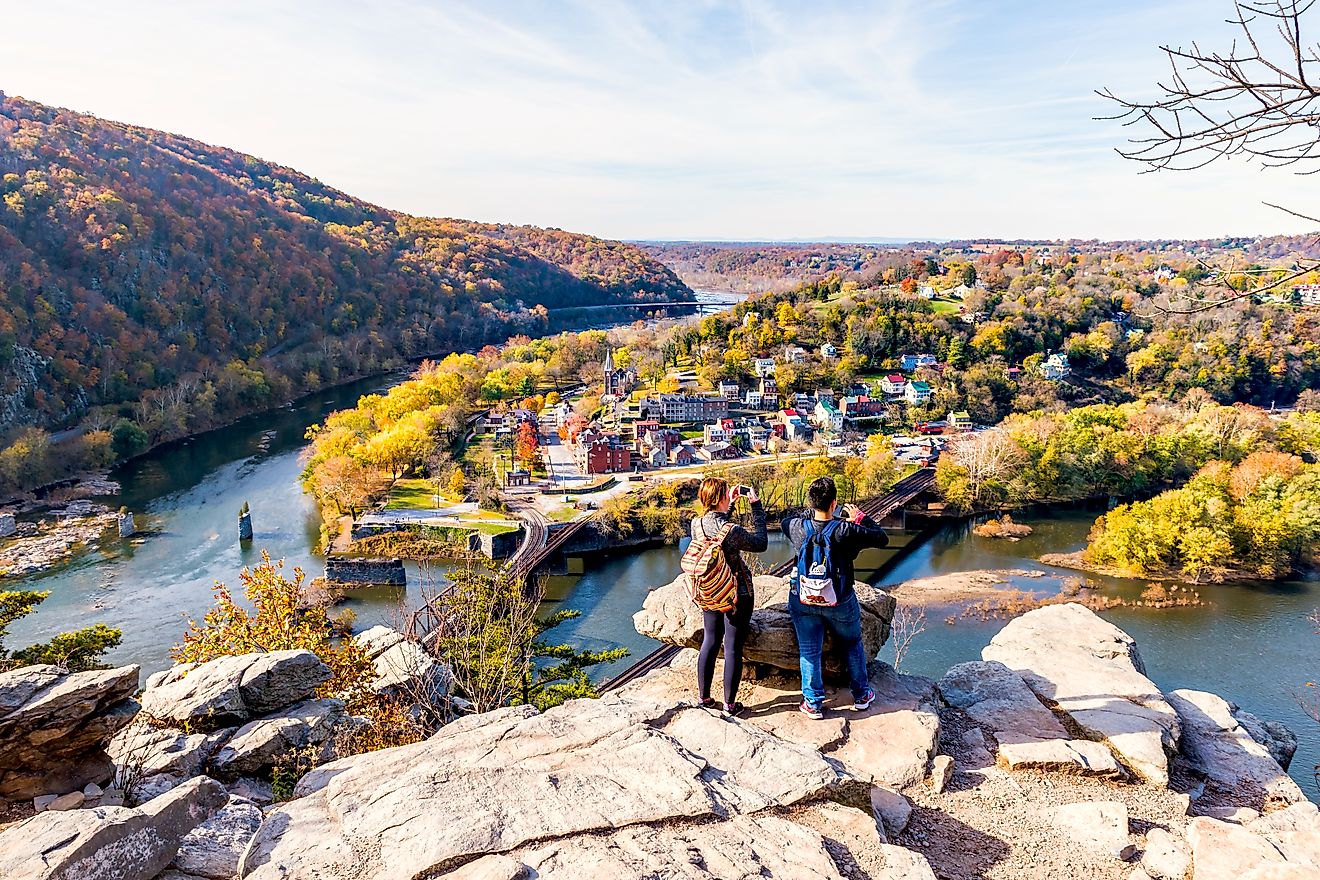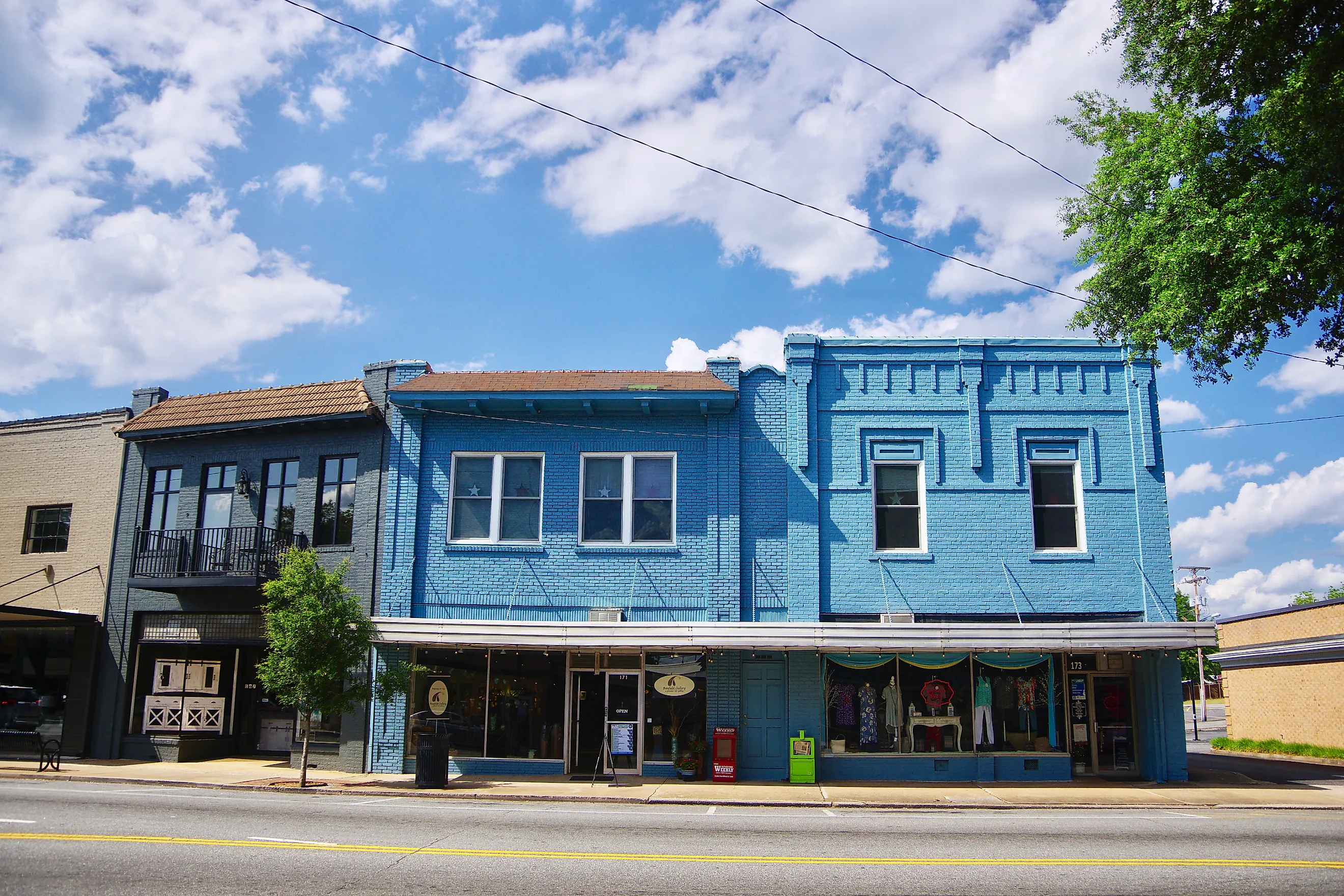
11 North Carolina Towns With Unforgettable Main Streets
Blink, and you might miss the most remarkable North Carolina experiences hiding in plain sight on the main streets of its smallest towns! Forget predictable tourism tropes; these historic thoroughfares tell stories of moonshiners and millworkers, unexpected gourmet delights and grassroots artistry. Each one serves as a living time capsule and a daringly modern incubator of local culture, all rolled into a single stretch of storefronts.
If you think you’ve seen it all, step onto these 11 unforgettable streets and watch the familiar dissolve into something altogether surprising, North Carolina style.
Blowing Rock
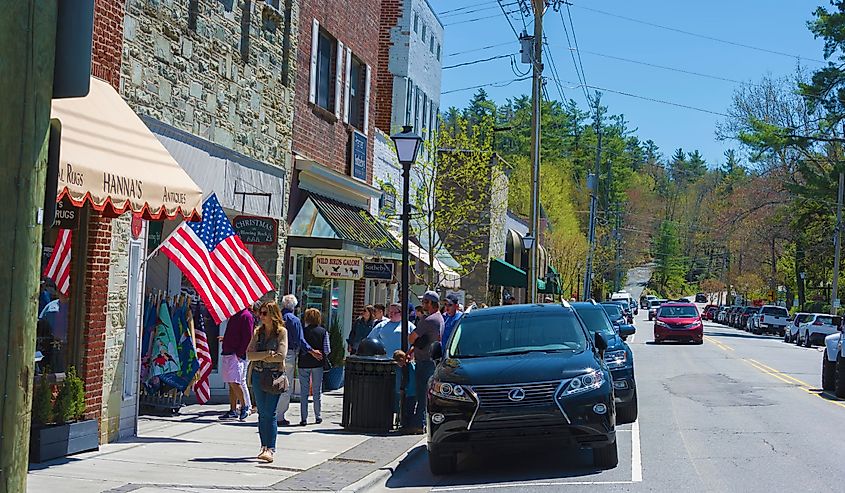
Blowing Rock, located in the heart of the Blue Ridge Mountains, is a tfantastic start to our list. Founded in the 1800s, Blowing Rock’s location along the Blue Ridge Parkway makes it a prime destination for outdoor enthusiasts. The town’s name comes from the natural rock formation that creates an updraft, allowing lighter objects to "blow" upwards, which is a significant local attraction. This stunning backdrop provides a serene atmosphere that permeates the town, especially on its main street.
Main Street in Blowing Rock offers a range of distinct experiences. You can dine at The Speckled Trout, known for its local trout and fresh mountain ingredients. Nearby, Kilwin’s serves famous homemade fudge and ice cream. The Blowing Rock Art & History Museum offers exhibits that delve into the region’s culture and history. For those seeking a more outdoorsy experience, the Broyhill Park provides a peaceful space for a walk or picnic. The street is also home to local shops like The Mountain Thread Company and The Blowing Rock Trading Post, perfect for exploring regional crafts and goods.
Davidson
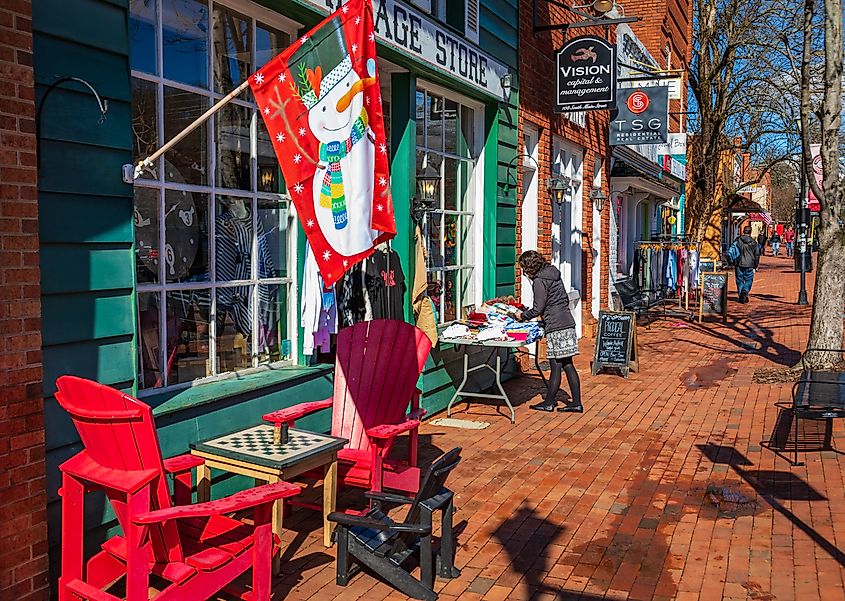
Davidson, located just north of Charlotte, is home to Davidson College, a prestigious liberal arts institution founded in 1837. The town is steeped in academic and cultural history, and its central location on Lake Norman enhances its charm. Davidson's Main Street is a reflection of this unique blend of education, history, and scenic beauty.
On Main Street, visitors can enjoy a variety of experiences. The Soda Shop, a local diner, serves classic American meals in a nostalgic setting. Nearby, Main Street Books offers a selection of books and literary gifts. The Davidson College Arboretum provides a peaceful, wooded area for walking and enjoying nature. For art lovers, the Davidson College Van Every/Smith Galleries showcase regional and national artists. Additionally, Davidson Farmers Market offers fresh produce and handmade goods on Saturdays.
Tryon
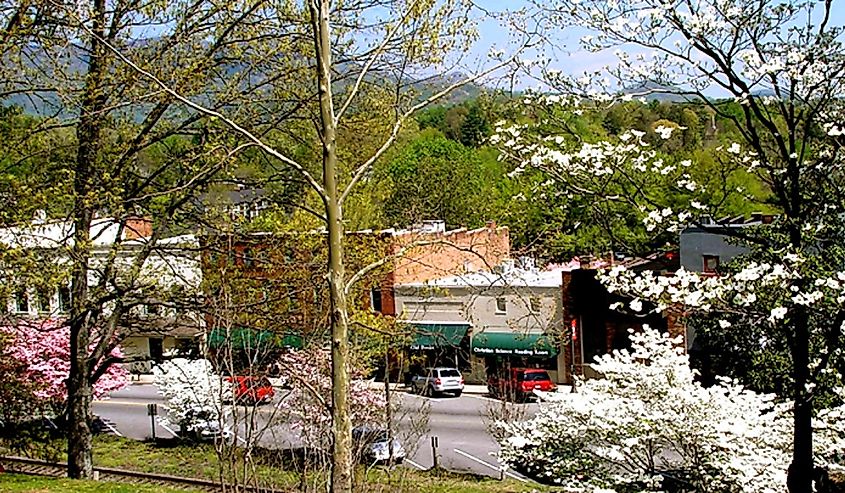
Tryon is a town rich in equestrian heritage and artistic expression, located in the foothills of the Blue Ridge Mountains. Established in the late 1800s as a resort destination, it has evolved into a vibrant community celebrated for its cultural and outdoor offerings.
A stroll along Trade Street reveals Tryon's unique blend of history and modernity. The Tryon Fine Arts Center hosts performances and exhibitions, enriching the town's cultural landscape. Adjacent to it, the Upstairs Artspace presents contemporary works from regional artists. The Tryon Theater, a historic cinema, offers a selection of films in an intimate setting. Culinary options such as Katie D's NY Bagels & Deli provide diverse dining experiences. For antique enthusiasts, the Tryon Antique Mall & Marketplace offers a vast collection of vintage items. The Nina Simone Plaza honors the legacy of the renowned musician born in Tryon, featuring a bronze sculpture and informative displays about her life. Additionally, the Tryon Arts & Crafts School offers classes and workshops, fostering the town's artistic community.
Marshall
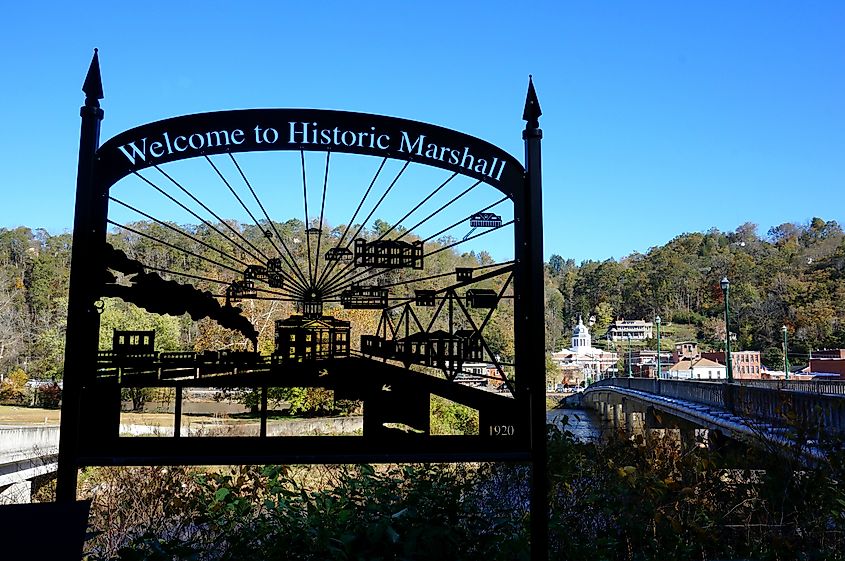
Marshall, located in the heart of Madison County, North Carolina, offers one of the state’s most memorable main streets, rich in history and culture. Situated along the banks of the French Broad River, Main Street is a living reflection of the town’s heritage, featuring buildings that date back to the 19th century. A hub of activity since the establishment of the railroad, Marshall’s main street has maintained its rustic charm while becoming a destination for locals and visitors alike. The preservation of its historic architecture, such as the Madison County Courthouse, is a testament to the town's commitment to its past.
On Main Street, visitors can experience a variety of attractions. The Marshall Depot, a former train station, now hosts a museum showcasing local history.
Weaverville

Weaverville, is located just ten miles north of Asheville, situated in the Reems Creek Valley. Established in the early 19th century, the town’s Main Street has transformed from a farming center into a vibrant district that reflects its rich history. Historic buildings line the street, with structures like the Weaverville United Methodist Church, built between 1919 and 1920, offering a glimpse into the town's architectural past.
On Main Street, there are a variety of attractions to explore. Artisans On Main showcases over 30 regional artists with a gallery and studio spaces, making it a key stop for art lovers. For dining, Blue Mountain Pizza & Brew Pub offers Italian dishes and craft beers brewed on-site, while Well-Bred Bakery & Café serves freshly made pastries and artisan breads. The Main Street Nature Park, located just behind the town hall, features walking trails and local flora. Nearby, the Zebulon B. Vance Birthplace provides a historical insight into the life of the former North Carolina governor.
Bath

Established in 1705, Bath is North Carolina's oldest town and was once its first port of entry. Main Street is lined with structures reflecting its colonial past, including the Palmer-Marsh House, built in 1744, and the Bonner House from the 1830s. The town also features St. Thomas Episcopal Church, constructed in 1734, making it the oldest standing church in the state.
The Historic Bath State Historic Site offers guided tours of the Palmer-Marsh and Bonner Houses, providing insights into colonial life. The Van der Veer House, dating to the 1790s, is also open for tours. St. Thomas Episcopal Church welcomes visitors to explore its historic architecture. Additionally, the Bath School, built in phases between 1918 and 1966, is listed on the National Register of Historic Places. The town's Visitor Center provides maps and information to enhance the historical experience.
New Bern
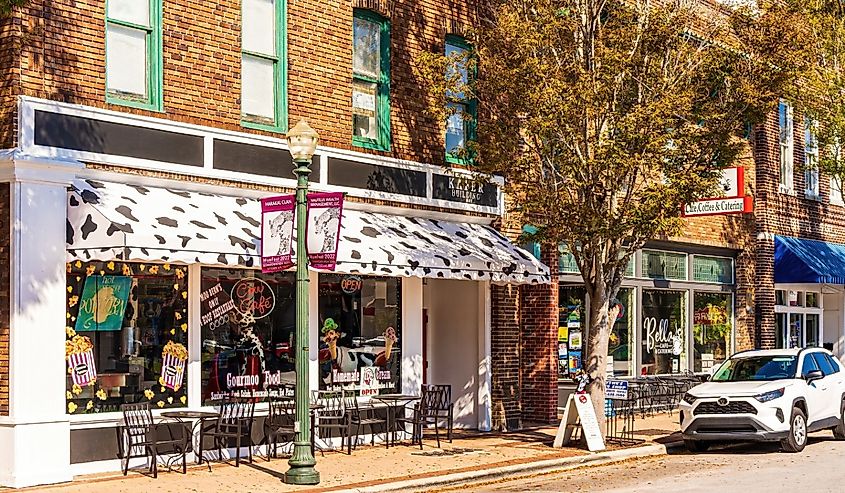
New Bern was established in 1710; it served as the first capital of North Carolina and the birthplace of Pepsi-Cola. The Main Street area features a collection of historic buildings, including the Masonic Temple and Theater, constructed between 1802 and 1809, and the Baxter Clock, a rare operational street clock installed in 1930.
Tryon Palace, the former royal governor's residence, provides guided tours and exhibits on colonial life. Nearby, the North Carolina History Center presents interactive exhibits detailing the state's past. For dining, establishments such as The Chelsea Restaurant, Morgan's Tavern & Grill, and Cypress Hall Kitchen + Bar serve diverse cuisines. Art enthusiasts can visit galleries like Carolina Creations Gallery of Fine Art, Design & Contemporary Craft. Additionally, Union Point Park offers green space at the rivers' edge, and the New Bern Fireman's Museum showcases antique firefighting equipment. Throughout the year, the area hosts festivals, including MumFest and the Coastal Carolina Flotilla, attracting visitors from various regions.
Lillington
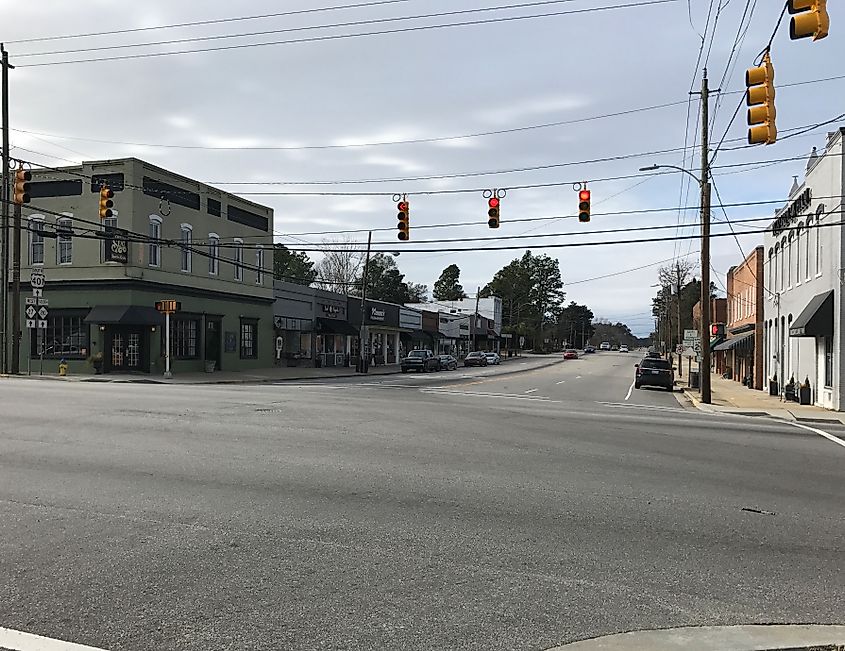
Lillington, located along the banks of the Cape Fear River, features a Main Street that encapsulates the town's rich history and community spirit. The area is characterized by historic architecture, including the Summer Villa and McKay-Salmon House, which showcases Greek and Classical Revival styles. The presence of the Summerville Presbyterian Church, built in 1848, adds to the historical tapestry of the community.
The Main Street Market hosts numerous vendors offering antiques, furniture, and vinyl records, providing a unique shopping experience. For dining, County Seat Sports Grille serves American cuisine in a sports bar setting.Outdoor enthusiasts can visit Raven Rock State Park, known for its 150-foot-high rock formation and extensive hiking trails. Cape Fear River Adventures offers activities such as lazy river tubing, kayaking, and glamping experiences. CATHIS Farm, a veteran-owned organic farm, provides seasonal events like the Sunflower Days and Pumpkin Hollow Corn Maze, contributing to the town's vibrant community life.
Forest City
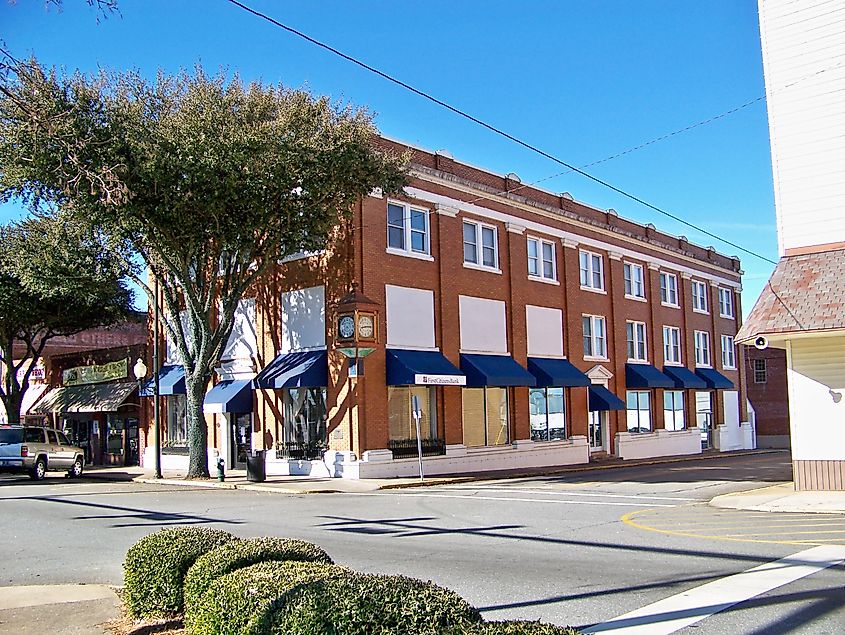
Established in 1877, Forest City experienced significant growth in the late 19th and early 20th centuries, evident in the architecture along Main Street. The Main Street Historic District encompasses 61 contributing buildings, including the U.S. Post Office, Farmers Bank and Trust building, and the Romina Theater. The district's design, with its wide streets and landscaped medians, was recognized in 1927 when Forest City was selected as one of the ten most beautiful and best-planned towns in the United States by the U.S. Department of Agriculture.
The Carolina Arcade Museum at 145 East Main Street houses a collection of vintage arcade games, providing interactive entertainment for all ages.At 139 East Main Street, Smith's Drugs of Forest City operates a classic soda fountain, serving traditional ice cream floats and grilled pimento cheese sandwiches. For outdoor enthusiasts, the Thermal Belt Rail Trail offers a 13.5-mile paved path suitable for biking, jogging, and walking, connecting Forest City with neighboring towns. Additionally, the Forest City Pavilion on Park Square hosts various community events and gatherings, enhancing the town's vibrant atmosphere.
Southern Pines
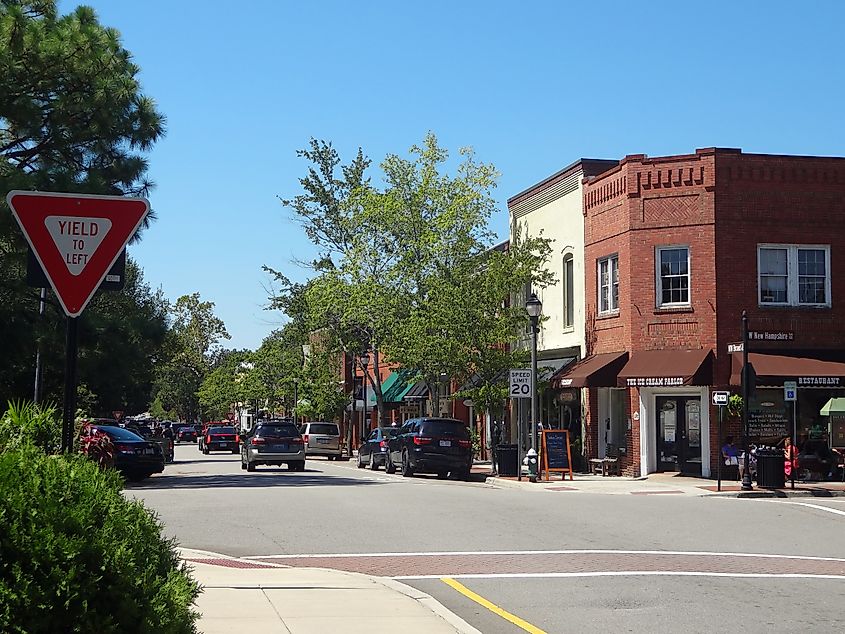
Southern Pines developed from two communities: East Southern Pines, primarily Scottish descendants, and West Southern Pines, one of North Carolina's first incorporated African American towns in 1923. The town's architecture showcases styles like Queen Anne, Colonial Revival, and Bungalow/American Craftsman, particularly evident in the Southern Pines Historic District, which includes 490 contributing buildings.
The Sunrise Theater, located at 250 Northwest Broad Street, hosts movies, plays, and concerts, serving as a cultural hub for the community. At 145 West Pennsylvania Avenue, the Weymouth Center for the Arts & Humanities, housed in the historic James Boyd House, offers tours and literary events, celebrating the region's literary heritage. For outdoor activities, Reservoir Park provides walking trails, a disc golf course, and a 95-acre lake for fishing and boating, enhancing the town's recreational offerings.
Pittsboro
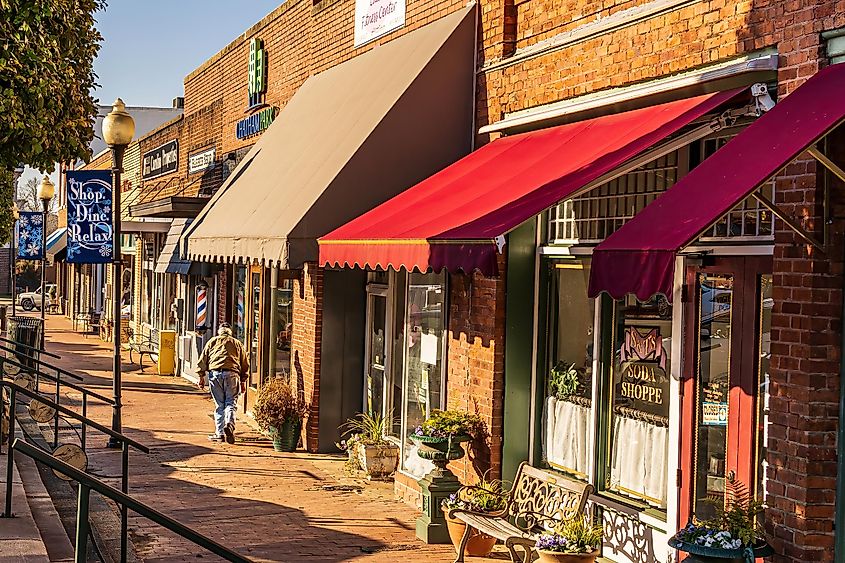
Pittsboro, serves as the county seat of Chatham County and is situated approximately 30 miles southwest of Raleigh. The Chatham County Courthouse, constructed in 1881, stands prominently at the intersection of Hillsboro and Salisbury Streets, serving as a central landmark. The courthouse's distinctive architecture and central location contribute to Pittsboro's nickname, "Circle City," referring to its traffic circle design.
S&T's Soda Shoppe, located at 85 Hillsboro Street, provides classic American fare and a nostalgic soda fountain experience.At 220 Market Street, McIntyre's Books offers a curated selection of literature and hosts author events, enriching the town's cultural scene.The Chatham County Historical Museum, housed in the historic 1926 courthouse, offers insights into the region's past.Additionally, the annual Shakori Hills GrassRoots Festival of Music and Dance, held nearby, attracts visitors with diverse musical performances and community engagement.
From Blowing Rock’s mountain breezes to Pittsboro’s traffic circle charm, North Carolina’s main streets invite exploration across centuries. They’re more than roads; they’re living chapters of local lore, each preserving a piece of old-world heritage while celebrating modern creativity. As you wander these distinct thoroughfares, you’ll find community traditions weaving themselves into every storefront and sidewalk. So go on, step into the story, and discover the unforgettable spirit behind each facade.
